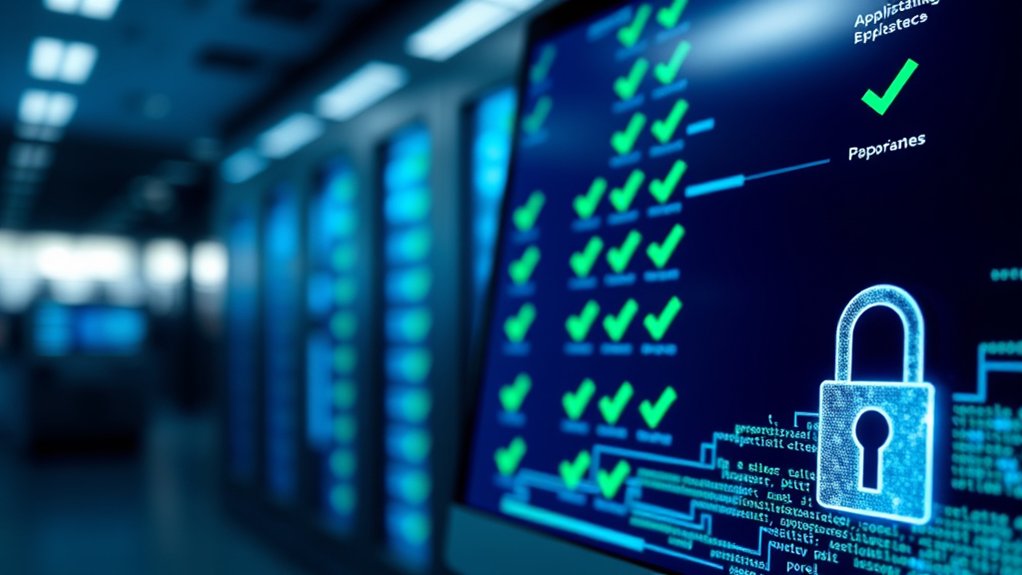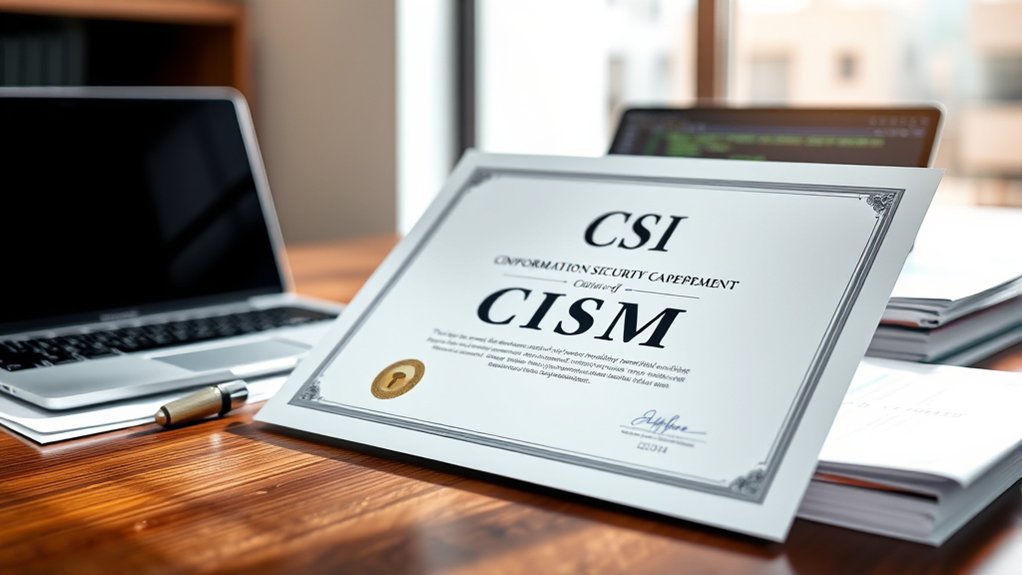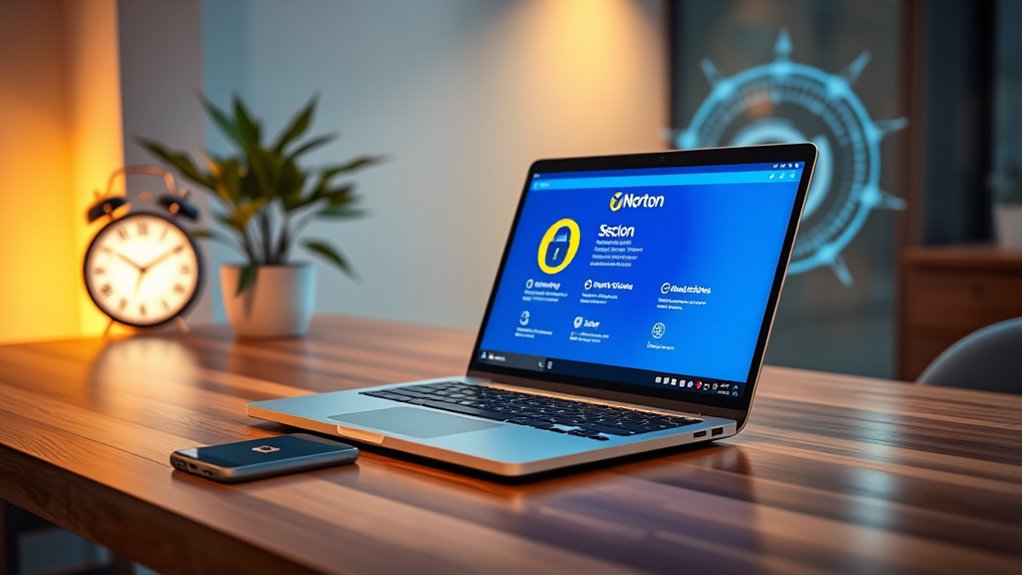Whitelisting is a cybersecurity measure that restricts network access to predetermined entities, such as IP addresses or applications. This method improves security by allowing only trusted sources, thereby considerably lowering the risk of unauthorized access and cyber threats, including malware and phishing attacks. Studies indicate that whitelisting can effectively guard against zero-day exploits, which are particularly challenging to detect. For further insights into its implementation and advantages, one can investigate additional details on best practices and methodologies.

In the domain of cybersecurity, whitelisting has emerged as a crucial strategy for improving system security. Whitelisting involves creating a thorough list of entities—such as IP addresses, email addresses, and applications—that are granted access to a network. This proactive measure serves to guarantee that only trusted sources can communicate with critical systems, effectively blocking unauthorized access and reducing the risk of various cybersecurity threats.
Whitelisting is a vital cybersecurity tactic that ensures only trusted entities access networks, enhancing system security and mitigating threats.
Types of whitelisting are diverse, with examples that include email whitelisting, which keeps emails from trusted senders from being flagged as spam. IP whitelisting limits network access strictly to specific IP addresses, bolstering security measures. Application whitelisting allows only approved applications to execute on a computer system, whereas advertising whitelisting selectively displays certain ads, blocking those from unverified sources. File whitelisting similarly plays a critical role, as it involves endorsing specific files to be executed. Additionally, regular updates are vital for maintaining security in whitelisting practices.
The benefits of implementing a whitelist are substantial, as this approach protects systems from both known and unknown threats. It improves the effectiveness of cybersecurity frameworks, especially against zero-day attacks, and reduces the likelihood of malware and phishing incidents. By controlling which software can operate, organizations can considerably enhance their overall security posture. Additionally, whitelisting is viewed as a more proactive defense strategy that complements traditional blacklisting methods. A whitelist functions as a stringent policy aligned with an organization’s cybersecurity strategy.
However, managing a whitelist demands continuous effort and resource allocation. The initial setup may take considerable time, particularly in larger organizations, and regular reviews are necessary to keep the whitelist current.
Reports indicate that human error can introduce risk, especially if malicious entities inadvertently receive clearance. Consequently, careful planning and periodic reviews of whitelisted items are critical for effective implementation.
Frequently Asked Questions
What Types of Organizations Should Implement Whitelisting?
Organizations that handle sensitive data, such as financial institutions, healthcare providers, and legal firms, should implement whitelisting practices.
These entities face regulatory requirements like HIPAA, demanding stringent data protection measures. Government agencies, tasked with safeguarding critical infrastructure, can likewise benefit from improved security.
Industry experts highlight that whitelisting provides a strong defense against cyber threats. By controlling user access and approved applications, organizations drastically mitigate risks associated with malware and unauthorized breaches.
Does Whitelisting Slow Down System Performance?
Whitelisting can potentially impact system performance, as its implementation may require substantial resources for maintenance and updates.
Experts note that although optimized software can minimize system load, administrative tasks might experience delays because of restricted access.
A balanced approach is necessary, ensuring that security measures do not hinder operational efficiency.
Organizations must weigh the benefits of reduced threats against the administrative burden to achieve a satisfactory performance-security equilibrium.
Can Whitelisting Prevent All Cyber Threats?
Whitelisting cannot prevent all cyber threats, particularly because of the existence of zero-day vulnerabilities, which exploit undiscovered software flaws.
In addition, maintaining an effective whitelist requires constant updates and adjustments for new software versions.
Experts caution against over-reliance on this strategy, as it may promote complacency in employing additional security measures.
Consequently, although whitelisting provides strong controls, it is not an all-encompassing solution for all cybersecurity challenges.
How Often Should Whitelist Entries Be Reviewed?
Regular reviews of whitelist entries are critical, ideally conducted at least quarterly. Such audits identify outdated entries and reduce vulnerabilities.
For instance, a 2022 study indicated that organizations which performed quarterly reviews experienced 30% fewer data breaches.
Furthermore, updates should coincide with new software releases and adapt to changing environments, consequently enhancing security.
Automated tools can facilitate this process, providing real-time alerts for unauthorized access attempts, thereby reinforcing overall cybersecurity efficacy.
What Tools Are Available for Whitelisting Applications?
Various tools facilitate application whitelisting, enhancing network security.
Software dedicated to application whitelisting enforces predetermined policies while offering automation features for updates and alerts. Integration with existing security systems, such as firewalls, improves overall protection.
User-friendly interfaces allow for efficient management of whitelists, while strong reporting tools provide insights into access attempts. Regular reviews and updates guarantee the whitelisting remains current, addressing compatibility issues across different platforms and operating systems.









